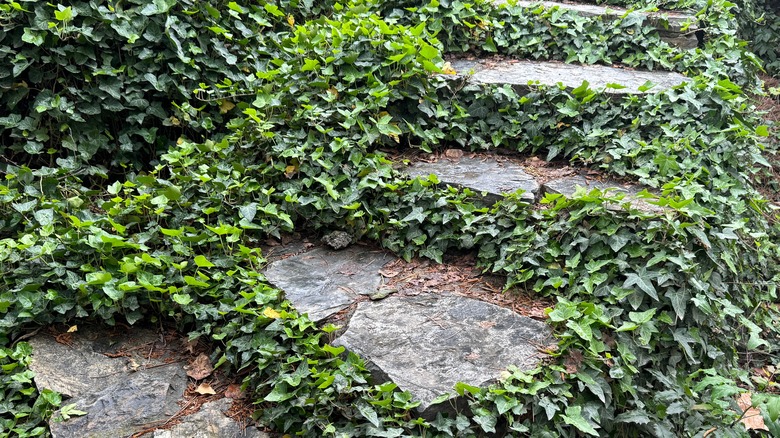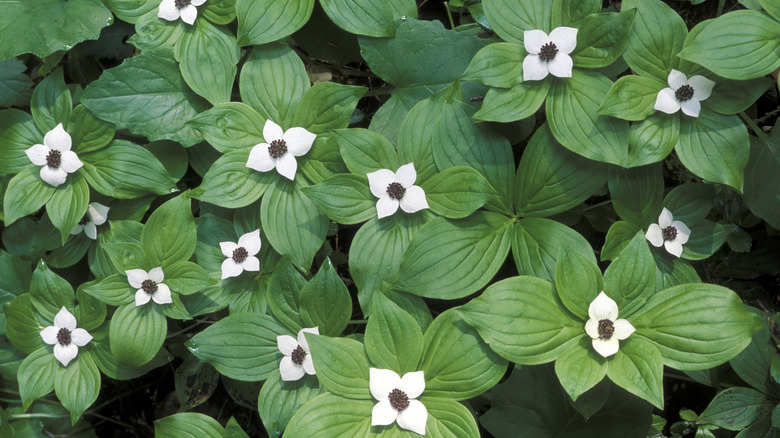The Cheery Ground Cover That Is A Perfect Alternative To Invasive English Ivy
English ivy (Hedera helix) has long been popular for its attractive, variegated foliage and red berries in winter. Unfortunately, English ivy has a number of unpleasant issues that are often overlooked. Among them are the fact that it's considered an invasive species that can swamp natural plants, the lovely berries are actually toxic to pets, and it's a haven for those sap-sucking pests — spider mites.
So what should you grow instead? Well, Bunchberry (Cornus canadensis) should certainly be high on your list of cheery ground cover plants that make a perfect alternative. As keen gardeners might have guessed from the Latin word Cornus, Bunchberry is a member of the dogwood family. However, unlike other dogwoods that can grow into substantial bushes or trees, Bunchberry is a ground cover plant that loves shade and only grows to a maximum of about 9 inches tall. Incidentally, it also has a whole bunch of other common names like dwarf dogwood, Canadian bunchberry, dogwood bunchberry, pudding berry, crackerberry, creeping dogwood, and dwarf cornel.
It's tough to beat a Bunchberry
Bunchberry is a non-invasive, North American native but is listed as threatened or endangered in several states. By growing it, you're helping to preserve the natural environment and provide habitat and food for wildlife like martens, chipmunks, cottontails, and hares. It is semi-evergreen with lovely, dense foliage. In late spring tiny little green flowers appear. These are surrounded by what look like four, bright white petals but are technically bracts (modified leaves). Vibrant red berries arrive in summer, becoming darker towards fall.
It's not just great to look at. Bunchberry is easy to grow, and although individual plants are relatively small, they spread to form a thick blanket of cover. Bunchberry is one of a number of plants that are deer and rabbit resistant. What's more, whereas English ivy berries are poisonous, Bunchberry fruit is completely non-toxic and safe for animals, birds, and people. Apparently, they don't taste of anything much, but Indigenous Americans have eaten them raw, in cooked foods, and used them for medicinal purposes. So, Bunchberry or English ivy? It's no contest.

